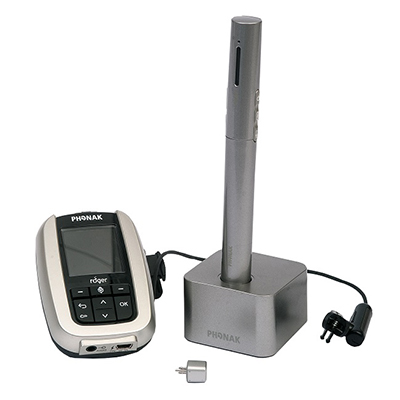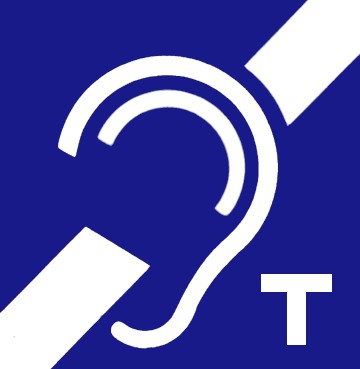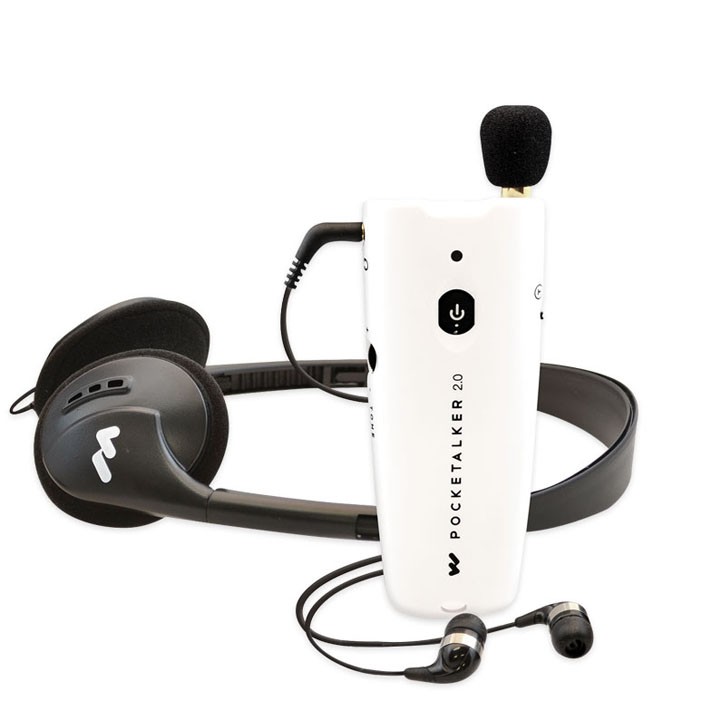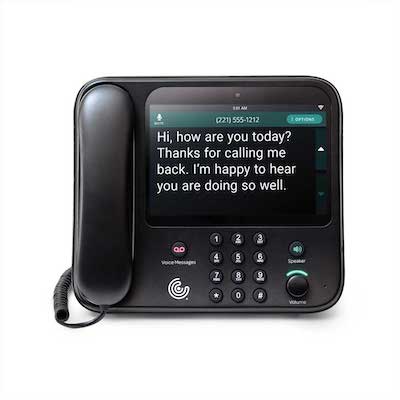Assistive Listening Devices

Hearing aids are great for helping people with hearing loss to better understand speech. While hearing aids include capabilities that help reduce background noise, there are still times when people with hearing loss may find it challenging to follow conversations in certain situations when wearing them.
The following are some of the most challenging scenarios even when wearing hearing aids:
- Hearing from a distance: Sound fades with distance. The harder it is to hear and understand what is being said, the further away the sound source is.
- Background noise: External noise can take your attention away from the person you're trying to hear. It might be difficult to understand speech when dealing with noise from ventilation systems, shuffling papers, TVs, traffic, and other sources.
- Poor acoustics: Reverberation and distortion are caused by sound waves bouncing off hard surfaces. Wide, open areas or minimally furnished rooms are known for having bad acoustics.
In many situations, cranking up the level means turning up every sound, even the background noise you're trying to drown out. This not only puts your hearing at risk but also prevents you from hearing what you need to hear.
Assistive listening devices (ALDs) can assist you in this situation.
Through sound amplification and noise filtration, assistive listening devices (or systems) enable people with hearing loss to hear better. This allows those with hearing loss to listen to the louder volumes they require without disturbing others.
They are distinct in several ways:
- They reduce background noise by increasing the signal-to-noise ratio.
- They compensate for problems with acoustics, such as echo in a room.
- They shorten the distance between the user and the sound source.
The way all ALDs work is the same. They establish a digital link between the listener and the audio source. The sound source is coupled to a transmitter that encodes the sounds and sends them to receivers. Individuals can walk about freely without being linked to an audio source in this way.
Types of Assistive Listening Devices

FM Systems
FM systems are the most widespread ALD systems, which use radio frequencies to provide amplified sounds straight to your hearing aid. They consist of a microphone, transmitter, and receiver. They can be found in various public places, including schools, restaurants, movie theaters, and churches.
The speaker uses a microphone to transmit sound to the receiver, tuned to a specific frequency.

Infrared Systems
For this ALD, Infrared light is converted into sound. A device for generating infrared light and a device for receiving and interpreting infrared light are included in infrared systems. They receive and enhance the sound in the same way as an FM system does. They can be found in a variety of settings, including auditoriums and theaters.
Infrared systems have the advantage of not being able to travel through walls, unlike FM systems. This eliminates rival broadcasts from interfering with the listener's experience and preventing the transfer of important information. This makes them instrumental in courtrooms and large movie theaters.

Telecoils

Personal Amplifiers
Personal amplifiers are utilized in smaller locations where radio waves are less efficient. They're most commonly utilized while watching TV, driving, or spending time outside.
The device's microphone is embedded right in. It's primarily directional, so you may point it in the direction of the sound source to pick up the signal more effectively.

Amplified Telephones
Users with amplified phones can adjust the phone volume to meet their needs. These phones frequently have features such as amplified ringers, telecoil compatibility, and portable amplifiers.
These devices will only be used by those with mild to moderate hearing loss, as they are ineffective for people with total or profound hearing loss.
If you require additional assistance in your everyday tasks, please contact us to learn more about the different types of ALDs we provide.
Life is worth listening to!
Begin your journey to better hearing today!
Begin Your Journey to Better Hearing
